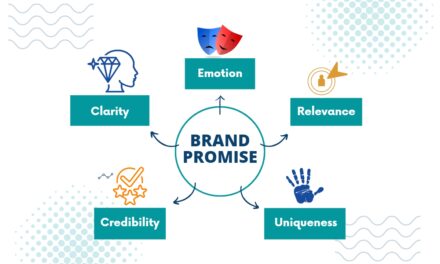Introduction
In the dynamic world of digital marketing, understanding the landscape of your competition is not just beneficial; it’s essential. For coaches stepping into this arena, mastering the art of Competitor Analysis is a foundational step towards carving out a unique space for your brand. This process involves meticulously dissecting the strategies, strengths, and weaknesses of your market rivals to enhance your own Brand Positioning.
But what exactly is competitor analysis, and why is it so crucial for effective brand positioning, especially for coaches? At its core, Competitor Analysis Techniques involve a deep dive into the strategies used by other coaches in your niche – from their marketing tactics to their client engagement methods. It’s about understanding the Brand Competitive Landscape and identifying where you can stand out.
For coaches new to digital marketing, this might seem daunting. However, with the right approach, it can be an enlightening journey that not only reveals insights about your competitors but also about your own brand’s potential. This blog post aims to guide you through the process of conducting a thorough Market Competitor Analysis and using these insights to develop Effective Brand Positioning Strategies. By the end of this guide, you’ll be equipped with the knowledge to not only understand your competitors but to also position your coaching brand in a way that resonates deeply with your target audience.
Understanding the Basics of Competitor Analysis
Embarking on the journey of competitor analysis begins with a fundamental understanding of its techniques and purpose, especially in the context of the coaching industry. Competitor Analysis Techniques are diverse, ranging from reviewing competitors’ social media strategies to analyzing their search engine optimization (SEO) tactics. For coaches, this means scrutinizing how other professionals in your niche attract and engage with their clients, both online and offline.
The first step in Market Competitor Analysis is identifying who your competitors are. This might include other coaches offering similar services, content creators in your niche, or even larger organizations with a coaching arm. Remember, competitors aren’t just those offering identical services but also those vying for the attention of your target audience.
Once you’ve identified your competitors, the next step is to analyze their strategies. This involves looking at their online presence, including their website, social media profiles, and any digital marketing campaigns they’re running. Pay attention to how they communicate their brand, the type of content they produce, and how they interact with their audience. Are they using video coaching sessions, interactive webinars, or perhaps engaging in community-building activities on social media? These insights are crucial in Understanding Competitor Strategies.
Another key aspect is analyzing their SEO strategies. SEO Competitor Analysis can reveal a lot about how competitors are reaching their audience online. Look at the keywords they’re targeting, their website’s search engine rankings, and their backlink profile. This information can help you understand the digital marketing tactics they’re employing to attract clients.
Lastly, consider their client engagement and feedback mechanisms. How are they gathering and responding to client feedback? Are there any gaps in their approach that you can capitalize on?
By thoroughly understanding these aspects of competitor analysis, coaches can gain invaluable insights into the market dynamics and discover opportunities for differentiation. This foundational knowledge sets the stage for developing a robust Brand Positioning Strategy, ensuring your coaching brand stands out in a crowded market.
The Role of Brand Positioning in Digital Marketing
Brand positioning in the realm of digital marketing, especially for coaches, is akin to finding your unique voice in a choir. It’s about carving out a distinct identity that resonates with your target audience, making your brand not just heard, but also remembered. Brand Positioning Strategies are the blueprint for how you want your coaching brand to be perceived in the minds of your potential clients.
At its core, effective brand positioning articulates what sets your coaching services apart. It’s not just about being different; it’s about being strategically different in ways that matter to your audience. This could involve specializing in a niche coaching area, adopting a unique coaching methodology, or even the way you interact with your community. For instance, a life coach focusing on mindfulness techniques for corporate professionals is using a specific brand positioning strategy to appeal to a particular segment of the market.
In digital marketing, brand positioning goes hand-in-hand with how you present your brand online. Every piece of content, every social media post, and every marketing campaign should align with and reinforce your chosen positioning. This consistency helps in building a strong brand image and aids in Competitive Market Positioning. For example, if your brand is positioned as an expert in career coaching for young professionals, your online content should reflect this, perhaps through insightful articles, career development tips, and success stories of past clients.
Moreover, effective brand positioning is not static; it evolves with your audience’s needs and market trends. This is where Brand Positioning Analysis becomes crucial. Regularly analyzing how your brand is perceived, understanding the changing needs of your audience, and observing how competitors are positioning themselves can provide insights for refining your strategy.
For coaches, particularly those new to digital marketing, understanding and implementing strong brand positioning strategies can be a game-changer. It’s not just about standing out; it’s about standing out for the right reasons and in the right way. By effectively positioning your brand, you create a unique space for your coaching services in the digital world, making it easier for your ideal clients to find and choose you.
Conducting a Strategic Competitor Analysis
For coaches venturing into the digital marketing landscape, conducting a strategic competitor analysis is a critical step in defining your unique place in the market. This process involves a deep dive into the tactics and strategies of your competitors, providing insights that can shape your own brand positioning.
Identifying Key Competitors
Begin by identifying your direct and indirect competitors. Direct competitors are other coaches offering similar services, while indirect competitors might include online courses, books, or even larger organizations in your niche. Tools like Google search and social media platforms can help you identify these competitors. Pay attention to those appearing in search results for keywords you’re targeting or those with a strong social media presence.
Analyzing Competitor Strategies
Once you’ve identified your competitors, analyze their digital marketing strategies. This includes their website design, content strategy, social media activity, and customer engagement tactics. Look for patterns in their SEO Competitor Analysis – what keywords are they targeting, and how are they ranking for these terms? Tools like SEMrush or Ahrefs can provide valuable insights into their SEO strategies.
Also, examine their Brand Positioning Strategies. How are they positioning themselves in the market? Are they positioning as budget-friendly coaches or premium service providers? Understanding their positioning can help you find gaps in the market where your brand can fit.
Evaluating Online Presence and Content
Evaluate the quality and type of content your competitors are producing. Are they using blogs, videos, podcasts, or webinars? What topics are they covering, and what is their engagement like? This analysis will help you understand what resonates with your target audience and how you can differentiate your content.
Social Media Analysis
Social media platforms are goldmines for competitor analysis. Observe their posting frequency, the type of content they share, and how they interact with their audience. Tools like BuzzSumo can help you analyze their most popular content and the level of engagement they receive.
Customer Feedback and Reviews
Don’t overlook customer feedback and reviews on platforms like Google, Yelp, or even comments on social media. This can provide insights into what clients appreciate or dislike about your competitors’ services, helping you refine your own offerings.
Actionable Insights
Finally, translate these observations into actionable insights. If you notice a gap in a competitor’s strategy, consider how you can fill it. If a particular type of content is performing well for them, think about how you can create similar but unique content for your audience.
Conducting a strategic competitor analysis is not about copying what others are doing; it’s about understanding the market landscape and finding your unique place in it. By thoroughly analyzing your competitors, you can develop a brand positioning strategy that sets you apart and resonates with your target audience in the coaching industry.
Tools and Techniques for Effective Analysis
In the digital age, having the right tools and techniques at your disposal can significantly streamline the process of competitor analysis. For coaches new to digital marketing, understanding and utilizing these resources can provide a wealth of insights into both your competitors’ strategies and your own brand positioning.
Digital Tools for Competitor Analysis
SEO Analysis Tools: Tools like SEMrush, Ahrefs, or Moz offer comprehensive features for SEO competitor analysis. They allow you to track competitors’ keyword rankings, backlink profiles, and even their ad strategies. By understanding the SEO tactics of your competitors, you can better optimize your website to compete in search rankings.
Social Media Monitoring Tools: Platforms like Hootsuite, BuzzSumo, or Sprout Social enable you to monitor your competitors’ social media presence. You can track their posting frequency, engagement rates, and the types of content that resonate with their audience. This insight is invaluable for shaping your own social media strategy.
Content Analysis Tools: Tools like BuzzSumo can also be used to analyze the most popular content within your niche. By understanding what content is engaging your target audience, you can tailor your content strategy to meet their interests and needs.
Google Alerts: Setting up Google Alerts for your competitors’ names or key industry terms can keep you updated on any new content or news related to them. This ongoing monitoring can provide real-time insights into their activities and strategies.
Analytical Techniques
SWOT Analysis: Conducting a SWOT (Strengths, Weaknesses, Opportunities, Threats) analysis on your competitors can provide a structured way to evaluate their position in the market compared to yours. This can help in identifying opportunities for differentiation.
Benchmarking: Compare your digital marketing metrics (like website traffic, engagement rates, etc.) with those of your competitors. This benchmarking can highlight areas for improvement in your own strategies.
Customer Feedback Analysis: Analyzing customer reviews and feedback on your competitors can offer insights into what clients value and what areas need improvement. This can guide you in fine-tuning your service offerings.
By leveraging these tools and techniques, coaches can conduct a thorough and effective competitor analysis. This process not only illuminates the competitive landscape but also helps in crafting a more informed and strategic approach to brand positioning in the digital marketing sphere.
Developing Your Brand Positioning Strategy
After conducting a comprehensive competitor analysis, the next pivotal step for coaches in the digital marketing realm is to develop a robust brand positioning strategy. This strategy is your roadmap to establishing a unique identity in the market that resonates with your target audience and differentiates you from your competitors.
Identifying Your Unique Selling Proposition (USP)
Your USP is the cornerstone of your brand positioning. It’s what makes your coaching services unique and desirable. Reflect on the insights gained from your competitor analysis. What gaps did you identify in the market? What strengths do you possess that others don’t? Perhaps you have a unique coaching methodology, a specific niche expertise, or a distinctive way of engaging with clients. Your USP should highlight these elements and form the basis of your brand messaging.
Aligning with Your Target Audience
Understanding your target audience is crucial in developing an effective brand positioning strategy. Your brand should not only be distinct but also relevant to the needs and desires of your potential clients. Tailor your messaging to address their specific challenges, goals, and aspirations. For example, if your target audience is corporate professionals seeking work-life balance, your brand positioning should clearly communicate how your coaching services can help achieve that.
Consistency Across All Channels
Consistency is key in brand positioning. Ensure that your USP and brand messaging are consistently reflected across all your digital marketing channels – from your website to social media platforms. This consistency helps in building brand recognition and trust with your audience.
Evolving with Feedback and Trends
Your brand positioning strategy should be dynamic, adapting to feedback from clients and changes in market trends. Regularly solicit feedback from your clients and stay attuned to shifts in the coaching industry. This agility allows you to refine your positioning strategy, ensuring it remains relevant and impactful.
Developing a strong brand positioning strategy is a strategic process that sets the foundation for your success in the digital marketing landscape. By clearly defining your USP, aligning with your target audience, maintaining consistency, and being adaptable, you can establish a powerful and enduring brand presence as a coach.
Navigating the Brand Competitive Landscape
In the ever-evolving world of digital marketing, navigating the brand competitive landscape requires not only understanding your position but also being adaptable to change. For coaches, this means continuously monitoring the market and being ready to adjust your strategies to maintain a competitive edge.
Staying Informed and Adaptable
The digital marketing landscape is dynamic, with new trends and technologies emerging constantly. Stay informed about the latest developments in your field and be prepared to integrate new strategies or tools that could enhance your brand’s visibility and appeal. For instance, if there’s a rising trend in virtual coaching sessions using new platforms, consider how you can incorporate these into your offerings.
Monitoring Competitor Movements
Keep an eye on your competitors’ activities. Changes in their strategies, such as a shift in their target audience or the introduction of new services, can impact your brand’s positioning. Regular competitor analysis ensures you’re not caught off guard and can respond strategically to maintain your competitive advantage.
Continuous Learning and Growth
Finally, view your journey in the digital marketing space as one of continuous learning and growth. Attend webinars, join professional groups, and engage with other coaches and marketing professionals. This ongoing education will not only keep you updated on best practices but also inspire innovative ideas for your brand positioning.
Navigating the brand competitive landscape successfully requires vigilance, adaptability, and a commitment to continuous improvement. By staying informed, monitoring the market, and embracing growth, you can ensure that your coaching brand remains relevant and compelling in a crowded and ever-changing market.
Conclusion
In conclusion, conducting a thorough competitor analysis and developing a strong brand positioning strategy are essential steps for coaches entering the digital marketing arena. By understanding your competitors and clearly defining your unique selling proposition, you can carve out a distinct space in the coaching market. Remember, the key to success lies in being informed, adaptable, and consistent in your approach. Embrace the journey of continuous learning and stay attuned to the evolving needs of your audience. With these strategies in hand, you are well-equipped to establish a powerful and resonant brand presence in the digital world.











